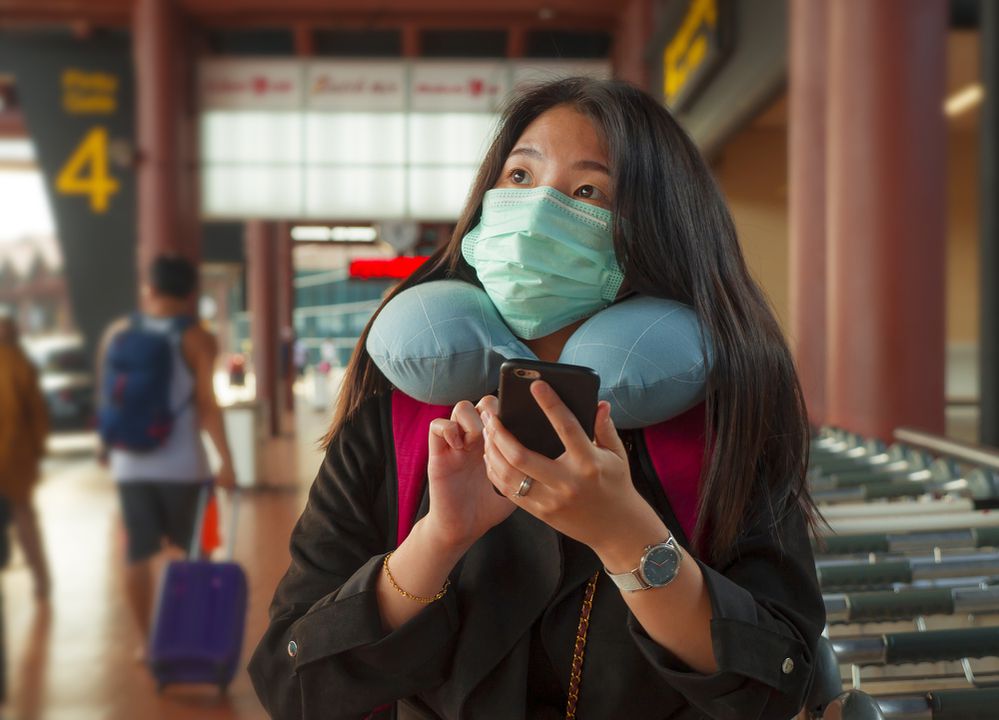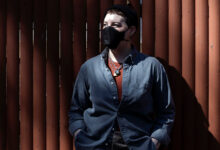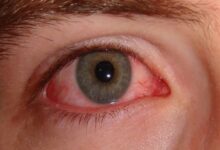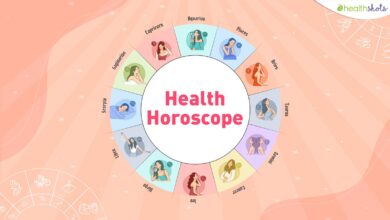
Quarantined cruise ships, digital protests, mask hoarding: the latest on the Wuhan coronavirus
A new coronavirus first identified in Wuhan, China, has global health agencies on high alert—and is causing no small amount of anxiety around the world. But for residents of the United States, there’s still no reason to panic. Here is everything experts know about the new virus, 2019-nCoV, so far. We’ll keep this article updated as more information comes available.
Colloquially known as the “Wuhan coronavirus” after the city where it is believed to have originated, the disease is still poorly understood. The first cases of 2019-nCoV appeared in December in the Chinese city of Wuhan, and likely came from some non-human animal host, though the exact animal and where it came into contact with humans has yet to be identified. Scientists have broadly criticized a recent study suggesting snakes might be the source. The latest claim from Chinese state media—that pangolins, which are frequently poached for their scales, could have passed the virus from bats to humans—lacks robust evidence as well.
Coronaviruses are a family of viruses that often cause mild respiratory symptoms (the common cold is one of them), but some can cause serious illness. Severe acute respiratory syndrome coronavirus (SARS-CoV), which jumped from bats to humans in China’s Guangdong Province in 2002, infected more than
On February 7, cases had been confirmed in China, Hong Kong, Macau, Taiwan, Australia, Belgium, Cambodia, Canada, Finland, France, Germany, India, Italy, Japan, Malaysia, Nepal, Philippines, Russia, Sri Lanka, Singapore, Spain, Sweden, Thailand, South Korea, the United Arab Emirates, the UK, the US, and Vietnam.
A Carnival’s Princess Cruises ship quarantined off the coast of Japan now has 61 confirmed cases out of 273 who have been tested. There are eight U.S. nationals among the latest round of confirmed cases. According to a blog posted by Princess Cruises on February 4, customers with 2019-nCoV are being taken ashore and cared for under a 14-day quarantine protocol. Passengers report that all 2,666 guests on board are being kept inside their cabins. Around 1,000 crew are providing room service, expanded entertainment options, and access to the deck for passengers with interior staterooms.
Another cruise ship—this one owned by Royal Caribbean—allowed customers to disembark in Bayonne, New Jersey, on Friday after 27 passengers were evaluated and four were taken to a hospital for additional testing. The CDC advised Mayor Jimmy Davis that it was a “below low risk” situation.
As of this morning there were 31,000 confirmed cases, according to the World Health Organization (WHO).
On Wednesday, WHO Director-General Tedros Adhanom Ghebreyesus confirmed that 99 percent of all known cases were identified in mainland China. So far, all but two of the 636 fatalities have occurred in the country. Hong Kong and the Philippines have each reported one death. Adhanom Ghebreyesus added at Wednesday’s press conference that 80 percent of confirmed cases are in Hubei Province, where the initial outbreak started.
While most patients outside China traveled to the Wuhan area within two weeks of being diagnosed, several dozen cases in other countries—including the US—have involved close family members who had not traveled to China.
Last week the WHO told CBS it considered the death rate for the novel coronavirus to be around 2 percent. Initial data suggests it is much less likely to result in an infected patient’s death than SARS—but a mortality rate of 2 percent is still concerning, especially for a virus that can spread so quietly and leave most of the infected relatively healthy. Some experts suspect the true fatality rate of the virus is below 1 percent, with rates inflated due to the fact that so many cases of 2019-nCoV feature only mild symptoms. It’s likely that many of these mild cases are going undetected.
“It’s good to remember that when H1N1 influenza came out in 2009, estimates of case fatality were 10 percent,” David Fisman, an epidemiologist at the University of Toronto, told Reuters. The actual fatality rate turned out to be well under 1 percent.
The WHO announced on January 30 that it had declared a state of public health emergency of international concern (PHEIC). Giving 2019-nCoV this designation enables the organization to issue specific response recommendations to different countries, and could help coordinate global response to avoid unnecessary impacts to the world’s economies.
“The main reason for this declaration is not because of what is happening in China, but because of what is happening in other countries,” WHO Director-General Tedros Adhanom Ghebreyesus said at a press conference last week. “Our greatest concern is the potential for the virus to spread to countries with weaker health systems, and which are ill-prepared to deal with it.”
He emphasized that the decision was “not a vote of no confidence in China,” adding that the WHO believed country had the capacity to control its outbreak on the national scale, and commended researchers for the speed at which they identified the outbreak, isolated the virus, sequenced its genome, and shared data with the international community.
The WHO plans to recommend “evidence-based” responses to the outbreak, and hopes to dissuade countries from implementing “measures that unnecessarily interfere with international travel and trade.”
“We call on all countries to implement decisions that are evidence-based and consistent. WHO stands ready to provide advice to any country that is considering which measures to take,” Adhanom Ghebreyesus said.
On February 5 health officials in Wisconsin confirmed an additional infection in the US, bringing the total count of confirmed patients up to 12. There are now two confirmed cases in the Chicago area, one in Maricopa County, Arizona, one in Everett, Washington, one in Dane County, Wisconsin, and one in the Boston area. The other six cases are in California: two in San Benito County, two in Santa Clara County, and one each in Orange and Los Angeles counties.
All but two of the U.S. patients traveled to Wuhan and acquired the infection there. Both individuals who caught the virus stateside are spouses of these patients, and became infected by way of direct personal contact. All are being treated and monitored in isolation to avoid further spread.
At a press briefing on February 3, the CDC’s National Center for Immunization and Respiratory Diseases Director Nancy Messonnier said that while she could not comment on the condition of individual patients, the department has seen “a spectrum of illness.”
“Some cases seem pretty mild, while at least some at points in their illness have been more seriously ill,” she said, adding that some patients had seen “ups and downs” and at least a few had required oxygen of some kind. She emphasized that data out of China continued to suggest those at highest risk of death were the elderly and those with underlying health problems, and that while the CDC expected to see more cases emerge in family members and close friends of already-identified patients, they hoped that transmission in the U.S. would stay contained enough to avoid fatalities.
The department reported on February 7 that an additional 225 people had been screened for 2019-nCoV and come up negative. Another 100 persons are still under investigation, with specimens either en route to CDC facilities for testing or currently being processed.
The CDC expects more cases to emerge, as the virus can seemingly be spread via coughs and sneezes; reports from China indicate that the vast majority of patients have symptoms minor enough to be mistaken for an innocuous cough or cold. Still, the CDC maintains that risk to the U.S. population remains low.
On February 4 the WHO said that the outbreak was not currently considered a pandemic, which refers to the “worldwide spread of a new disease.” There have been no confirmed cases of the virus in South America or Africa, and while cases are still emerging, the vast majority are still centered around an epidemic in China. At a global level, the virus is still something public health officials have the potential to track and contain.
“It’s very, very transmissible, and it almost certainly is going to be a pandemic,” Anthony S. Fauci, director of the National Institute of Allergy and Infectious Disease, told The New York Times. “But will it be catastrophic? I don’t know.”
Johns Hopkins Senior Scholar Amesh Adalja, who focuses on infectious diseases and emergency medicine, told CNBC that the virus could become an annual occurrence quite like influenza, which kills tens of thousands of people each year in the US alone but is mostly a mild nuisance to people who catch it.
“It’s going to become a part of our seasonal respiratory virus family that causes disease,” he said, though he suspects the current outbreak will reach pandemic levels before it settles down. To prepare for that—and for future spikes of the illness in future seasons—we must get a better grip on how to track and treat the disease, so we can protect those who are most vulnerable to developing life-threatening symptoms.
“It’s important that we get a handle on what the severity is and who has the risk factors, so that we can protect those individuals,” Adalja told CNBC. “Many people are going to get mild illness, and it’s going to be more like a flu-like illness for many peoples but for some it may be very severe.”
At a press conference on February 5, WHO Director-General Tedros said that keeping the novel coronavirus from spreading globally would require a surge of financial assistance from wealthier countries.
“My biggest worry is that there are countries today who do not have the systems in place to detect people who have contracted with the virus, even if it were to emerge,” he said. “Urgent support is needed to bolster weak health systems to detect, diagnose, and care for people with the virus, to prevent further human to human transmission and protect health workers.” The WHO has released a strategic plan to prevent global spread of the virus from now through April, which requires $675 million in funding. The Bill and Melinda Gates Foundation has pledged $100 million.
“The effectiveness of outbreak response depends on the preparedness measures put in place before outbreaks strike,” said Mike Ryan, head of WHO’s Health Emergencies Program. “That is why we are seeking resources to safeguard the most vulnerable countries to protect people from the new coronavirus before it arrives on the doorstep.”
“Invest today,” Tedros said, “or pay more later.”
Symptoms of 2019-nCoV include cough, fever, and difficulty breathing, but seem to usually be quite minor or even nonexistent in infected individuals. Life-threatening pneumonia is possible for any patient, however, and seniors, individuals with underlying health problems, and people with compromised immune systems are at particularly high risk.
The BBC reported that, according to China’s National Health Commission, around 80 percent of 2019-nCoV fatalities had occurred in those over the age of 60, and 75 percent of deceased patients had underlying health conditions at the time of their infection.
The virus can be spread via sneezing and coughing, and perhaps via direct contact when no symptoms present. A study published in the New England Journal of Medicine on January 30 reported that a patient passed it to multiple colleagues before developing symptoms, but that study has since been retracted. Science Magazine and The Washington Post report that this woman actually had mild, unspecific symptoms at the time she transmitted 2019-nCoV to several coworkers. For now, it is unclear whether or not completely asymptomatic patients can infect others with the virus, but the mild nature of symptoms in many patients suggests one could be contagious without feeling particularly unwell.
According to the CDC, person-to-person transmission is most likely to occur via respiratory droplets from coughing and sneezing, which can land in a bystander’s nose or mouth or be inhaled. The CDC says it is “currently unclear” if a person can get 2019-nCoV by touching a surface that has the virus on it and then touching their face, mouth, or eyes—but practicing the same basic hygiene you would implement to avoid a cold or flu should significantly cut down on your risk of getting sick, even if you’re in close quarters with someone who has 2019-nCoV.
As Ed Yong reports for The Atlantic, 2019-nCoV’s numbers are surging above confirmed SARS cases but that may not be as alarming as it appears; health officials around the world are doing a much better job of tracking and diagnosing cases of the novel virus, and it’s far too soon to know how much this may be inflating its apparent scale.
Experts say China’s handling of the new outbreak shows a drastic improvement in public health policy compared to the mishandling of SARS. Back in 2003, officials denied the existence of the outbreak seemingly as long as possible and didn’t cooperate with the international community to manage the disease. While there’s some question about whether officials in Wuhan moved quickly enough—and whether the central government approved the release of information as immediately as it should have—the country has been more forthcoming. Scientists were also much quicker to sequence the genome of this new virus than the one behind SARS, and released it to international research collaborators on January 10.
Wuhan, a city of around 11 million people, as well as much of the surrounding Hubei Province, remains on lockdown, with some reports suggesting residents have suffered diminished access to food and medical supplies due to their forced isolation.
“If the province was not sealed off, some people would have gone all around the country to try to get medical help, and would have turned the whole nation into an epidemic-stricken area,” Yang Gonghuan, former deputy director general of China’s Center for Disease Control and Prevention, told Bloomberg. “The quarantine brought a lot of hardship to Hubei and Wuhan, but it was the right thing to do.”
Other restrictions on travel and public gatherings are affecting nearly 60 million people in surrounding areas. Several major cities and manufacturing areas in China have announced that workplaces will remain shuttered until at least next week. The country has allocated $9 billion to fight the virus, and welcomed a team of specialists from WHO to help track and contain the spread of disease. There are several new hospitals being built rapidly to help streamline and contain confirmed patients.
Some of the first physicians to call attention to the novel coronavirus in December were reprimanded by the government for spreading rumors, according to CNN, but citizens are now being encouraged to help keep the virus from spreading. Chinese state media reported on Thursday that Li Wenliang, one of the early whistle blowers, had died of 2019-nCoV, but then reported hours later that he was merely in critical condition. Once his death was officially confirmed, The Washington Post reported on Friday, millions of Chinese citizens participated in “a remarkable but short-lived digital uprising” before censors scrubbed their posts from social media. The New York Times reported Friday that, in a rare response to public pressure, the U.S. government had announced plans to send an “investigation team” to Wuhan to probe issues related to the silencing of the 34-year-old doctor and his colleagues.
CBS reported this week that senior members of China’s Community Party admitted to “shortcomings and deficiencies” in the country’s response and welcomed the assistance of outside experts from an incoming WHO team.
All confirmed U.S. patients are being treated in isolation.
Last week the Trump Administration put a temporary travel ban in place, despite the fact that WHO does not currently recommend any travel or trade restrictions.
Foreign nationals who have traveled to China in the last 14 days—with the exception of permanent U.S. residents and the immediate family of citizens—won’t be allowed into the country. Citizens and permanent residents will be subject to 14-day quarantines if they return to the country within two weeks of visiting Hubei province in China, and must agree to monitoring and a self-imposed quarantine of the same length if they have traveled anywhere in China.
“This is an aggressive action by the United States,” Messonnier told press on February 3. “We made an aggressive decision in front of an unprecedented threat.”
She added, however, that the risk to Americans was still considered quite low, and that these screening precautions can’t keep all cases at bay.
Some 200 U.S. diplomats and other citizens were evacuated from mainland China and arrived in California last week, The Washington Post reported. The passengers have already passed several health screenings and will be kept confined to their assigned housing on an Air Force base to ensure they don’t have the virus. At a press conference on February 5, Messonnier reported that four additional planes would bring Americans home from Wuhan this week. CDC medical staff are being sent out to provide screening, monitoring, and treatment throughout a mandatory quarantine at military bases in Nebraska, California, and Texas.
“This could be the beginning of what could be a long response,” Messonnier told reporters on Wednesday.
Delta, American, and United Airlines have all temporarily halted their flights between the US and mainland China following a law suit filed by the Allied Pilots Association arguing that such flights posed an unacceptable risk to crew. This week, American Airlines suspended some of its flights to and from Hong Kong as well.
Several pharmaceutical companies and research institutions around the globe are working to find potential treatments or vaccines for 2019-nCoV. But it could easily take months to get a formula that works well enough to test on humans, let alone something that can be broadly deployed.
Many claims of cures or preventative treatments are circulating online, but the WHO confirms that there’s no known supplement, food, or medication that can protect people from 2019-nCoV. However, it is advisable to get a flu shot if you have yet to do so, as the similar symptoms between the two viruses could lead those with influenza to take up valuable space and time in hospitals, and since a compromised immune system could leave you more susceptible to catching 2019-nCoV.
The WHO advises travelers who may come into contact with the virus to follow basic precautions, such as avoiding people who are coughing or sneezing and frequently washing hands thoroughly. Travelers to China, and especially the Hubei area, should avoid living and dead animals and uncooked meat or raw milk, wash hands often, and stay clear of visibly sick people.
Face masks aren’t particularly helpful in preventing infection when healthy people wear them (their main benefit is to keep the virus from spreading via coughs and sneezes), and hoarding them can do more harm than good by limiting the available supply for health practitioners and causing prices to spike.
“This situation is exacerbated by widespread use of personal protective equipment outside patient care,” WHO Director-General Tedros said at a press conference on Friday.
Anyone who’s recently traveled to the Wuhan area or come into close contact with someone who has should keep on the lookout for symptoms and talk to a doctor immediately if they develop a fever, cough, or difficulty breathing. Those who’ve recently traveled to China and are feeling unwell should call ahead before going to a doctor’s office or emergency room, as healthcare practitioners should aim to limit direct contact between the patient and other individuals.







